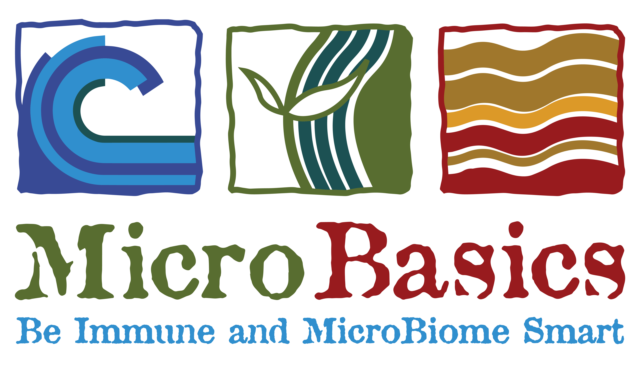The differences between environmental and contagious mastitis are now largely understood among researchers and dairy producers alike. But it took a great many studies over a number of years to make that distinction. One project in particular that helped to point out the need for new mastitis control methods was developed in the 1960s by The National Institute for Research in Dairying in Britain in cooperation with Cornell University.
“[Researchers] identified that milking time hygiene practices could prevent the spread of contagious mastitis – notably Staphylococcus aureus and Streptococcus agalactiae – but did not impact environmental mastitis, “ says Washington State University’s Larry Fox. “They discovered that mastitis control strategies weren’t like tube socks, where one size fits all.”
Fox has researched contagious mastitis, particularly in the areas of Staph. aureus transmission and epidemiology as well as intervention and prevention strategies.
For a number of years, Fox studied Staph aureus related to mastitis in heifers and its transmission. More recently, he has done work on mycoplasma mastitis and identifying how to prevent it.
The knowledge developed in the 1960s played a large role in Fox’s beginning years at Washington State University , where he and colleague John McDonald developed production medicine and management techniques at the university’s Field Disease Investigation Unit.
McDonald focused on environmental mastitis while Fox studied contagious forms of mastitis. Their collaborative efforts led to discoveries and strategies in both areas for mastitis abatement.
Areas where the two researchers were able to work together included a study on the control efficacy of segregating cows with Staph. aureus mastitis and utilizing bulk tank cultures to monitor the severity of mastitis cases.
Larry Smith, who specializes in mastitis research at the Ohio Agricultural Research and Development Center (OARDC), credits individuals like Robert Eberhart at Penn State’s veterinary science department with helping fellow researchers see that there were multiple groups of mastitis pathogens.
“He found that procedures being implemented to control contagious mastitis weren’t necessarily controlling these other forms, like the coliform and environmental Strep,” Smith says. “So it was in the late 1970s, early ’80s, that people really began to see that there were at least two different groups of pathogens to deal with.”
Smith explains that the knowledge became the “driving force” behind what was being studied with the research herd at the OARDC.
In 1978, a “state-of-the-art” freestall barn was built at the center, and administrators chose to use recycled manure solids as bedding. Smith and his team soon discovered multiple cases of mastitis in the herd but realized it wasn’t in contagious forms – it was all environmental mastitis.
“We had a built-in ‘brewery’ of environmental mastitis in this new facility,” Smith says. “It gave us the opportunity to study the dynamics of these pathogens across all stages of lactation.”
Smith and his team were then able to draw conclusions, published in two papers in 1985, on the effects of environmental mastitis related to bedding, parity and stage of lactation across the dry period and as cows approached the calving period.
The use of this research herd eventually lead to other discoveries, including how the ration, particularly selenium and Vitamin E intake, plays a role in the prevention of environmental mastitis. Smith and his team also spent time researching vaccines used to control coliform mastitis.
Both Smith and Fox say their respective studies – and the research herds involved – were a good representation of how the industry was beginning to trend toward larger scale, confinement operations.
In fact, Fox began focusing his research on mycoplasma mastitis, due to what he called the “supply and demand” of the situation.
“We noticed there was an increase in mycoplasma mastitis herd prevalence in our area, growing from less than 1 percent to close to 8 percent,” Fox says. “And that was documented and substantiated by others, who found that it was correlated mostly to the increase in herd size. So we were trying to address the problems of a disease that seemed to be influenced by herd size.”
More than 30 years of research across the world has helped dairy producers understand the differences between environmental and contagious mastitis and the methods used to prevent, treat and control them. But according to Fox and Smith, education is still needed.
“I think where producers get confused is with the coagulase-negative staphylococcus (CNS), or non-aureus,” Fox says. “We tend to lump CNS as non-contagious, so they’re not necessarily environmental.
They’re more opportunistic and reside on the teat skin of cows. The mechanism of infection for the Staph . aureus and the CNS are very different.”
Smith believes producers have done a great job of understanding the need for reducing exposure to teat ends in the milking parlor but that they need to bring other areas of the farm into consideration.
“The way you really control these pathogens is to prevent quarters from becoming infected in the first place,” Smith says. “Bedding plays such a huge role in that.”
According to Smith, one of the most consistent and high-priority items for today’s dairy industry is better facilities that maximize cow comfort and minimize pathogen exposure, reducing the risk of environmental mastitis.
On the Staphylococcus side, Fox believes the industry has made great strides in developing the intervention strategies to deal with this group of mastitis pathogens. Today, technology is being developed to differentiate forms of coagulase-negative staphs.
“We hope to refine techniques and strategies to control CNS mastitis, and I think this will help us educate dairy producers on how they can better deal with it, and they can become more knowledgeable about this form of the mastitis disease complex,” Fox says. PD

Learn more about milk quality history in new book
The article on pgs. 49-50 appears in the recently released commemorative book from the National Mastitis Council.
The book is a collection of the past 50 years of mastitis control, milk quality, the history of the National Mastitis Council, personal recollections from current and past members as well as a look at what the future of milk quality holds.
“Through the years NMC has grown from humble beginnings into an organization of internationally recognized experts in the field of milk quality,” says Sheila Andrew, president of NMC.
“As you read this historical tribute, we hope it reminds you of the great strides in mastitis research, the importance of the original five-point plan, and how NMC has been successful in providing current, science-based educational information to generations of dairy producers and their consultants for more than 50 years.”
Special thanks are given to everyone who contributed to this book, including past presidents, members, staff, sponsors and industry publications.
Sponsors include: A&L Laboratories, Inc., Alltech, Boehringer Ingelheim Vetmedica, Inc., BouMatic, DairyBusiness Communications, Dairy Farmers of America, Inc., Dairy Herd Management, Dairy Today, DeLaval, Inc., Ecolab Inc., Elanco Animal Health, Filament Marketing, GEA Farm Technologies, Inc., Hoard’s Dairyman, IDEXX Laboratories, Land O’Lakes, Inc., Lauren AgriSystems, Pfizer Animal Health and Progressive Dairyman.
To view a copy of the commemorative booklet click here . PD






